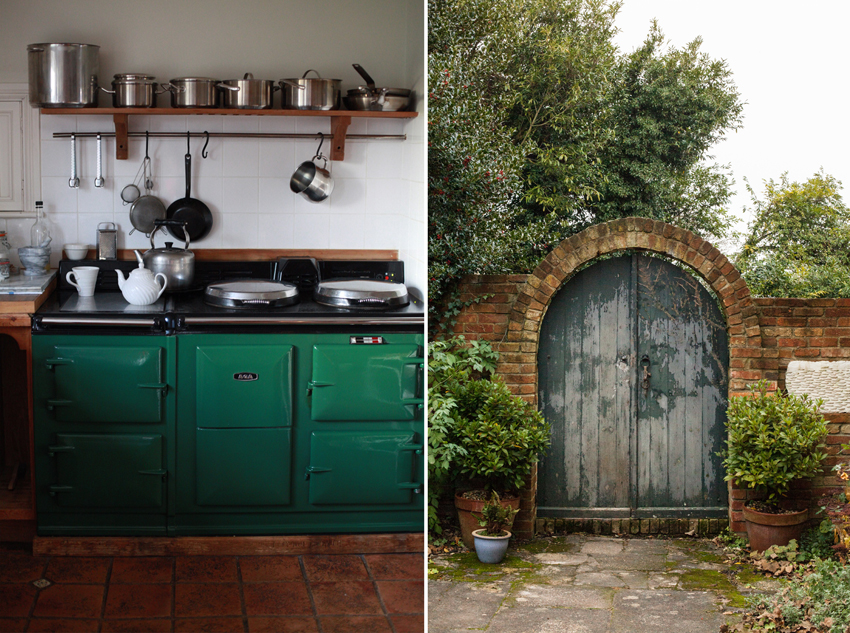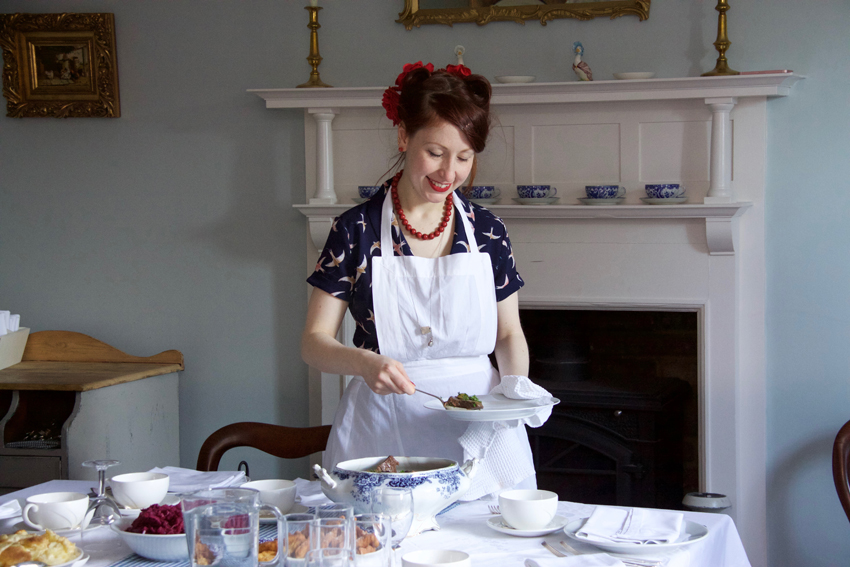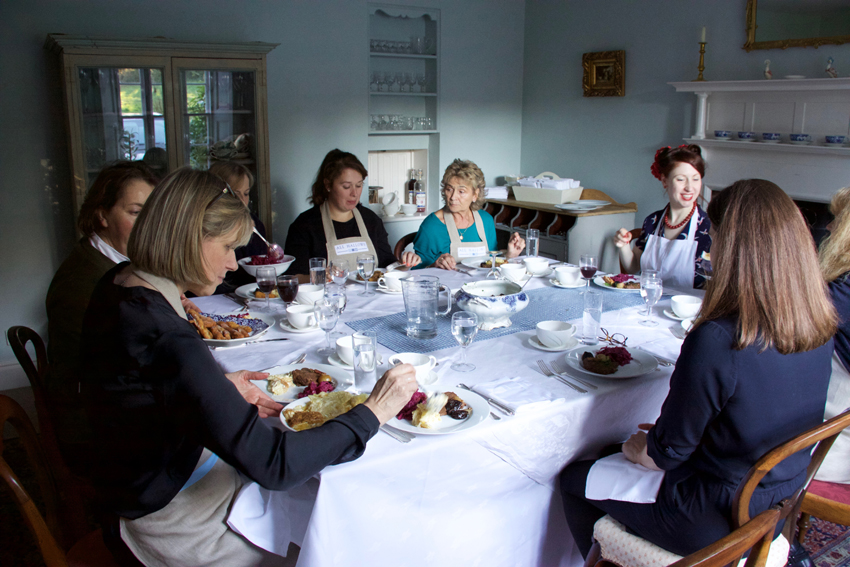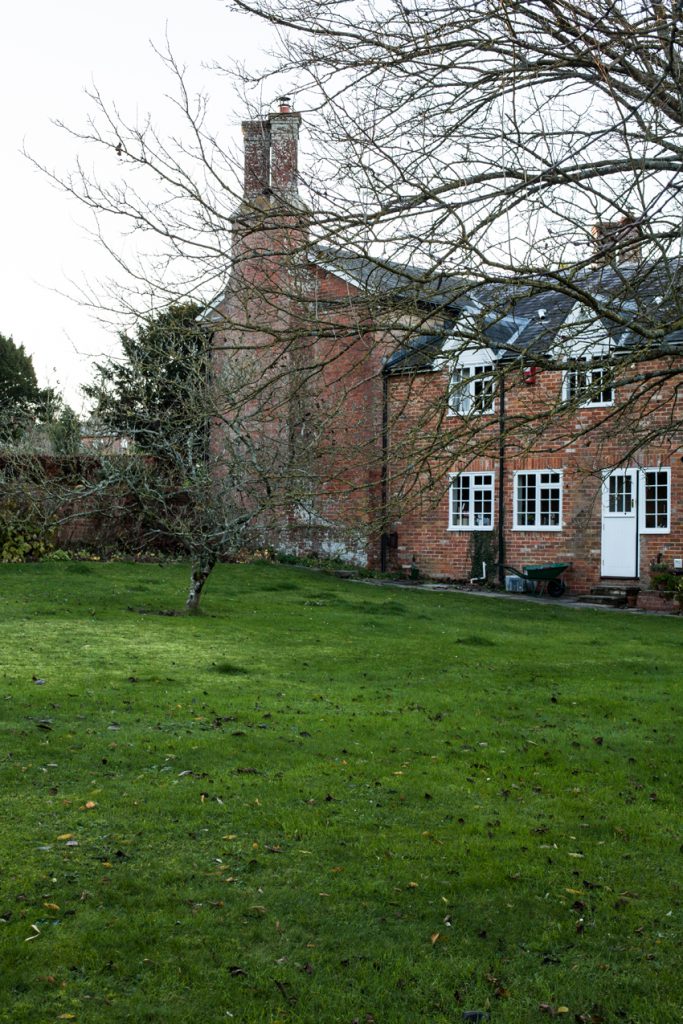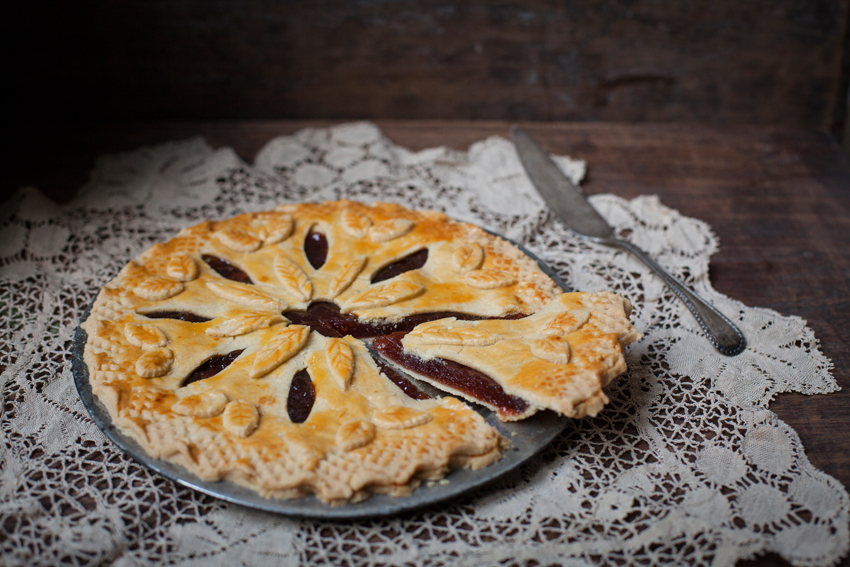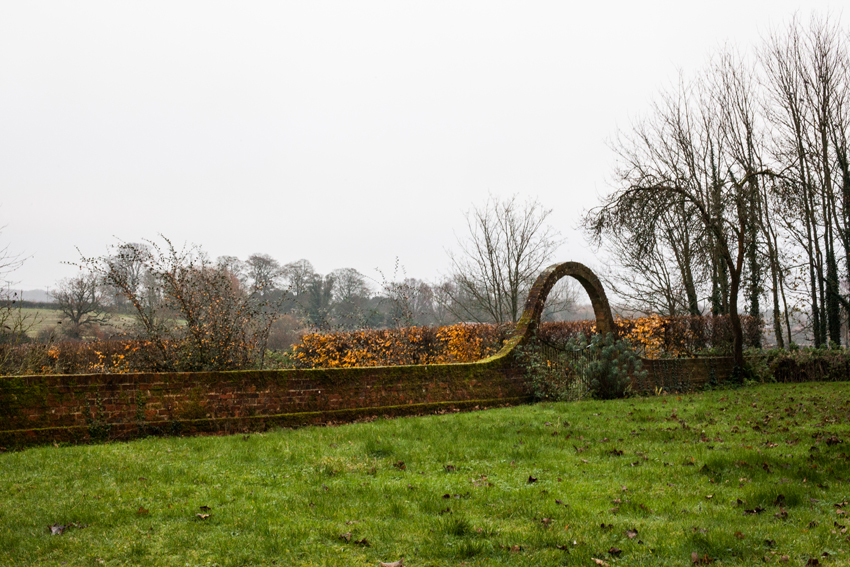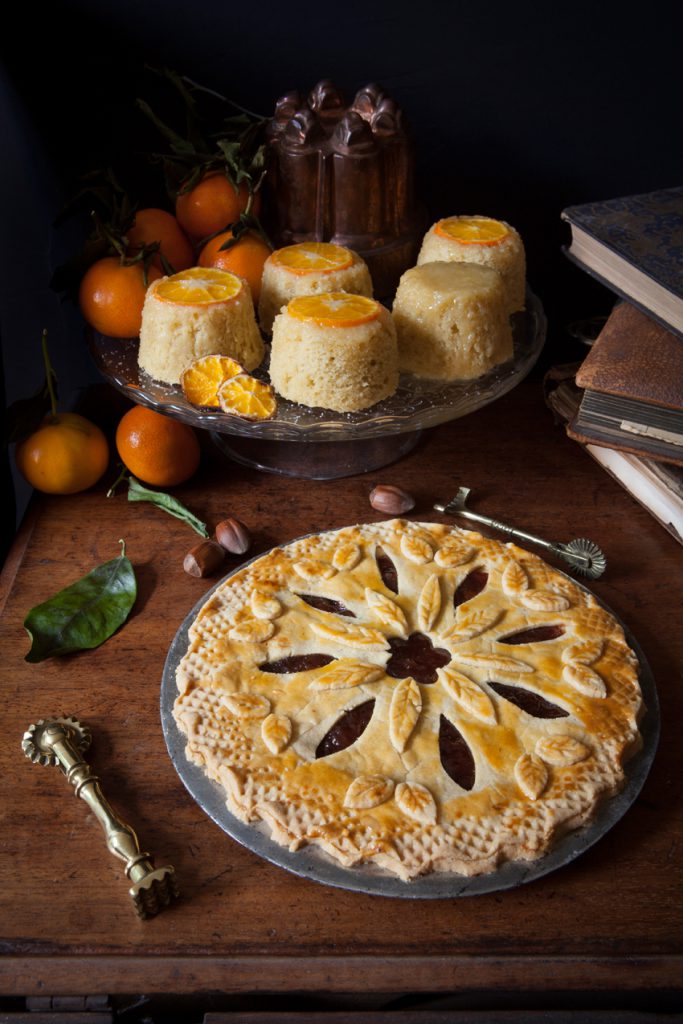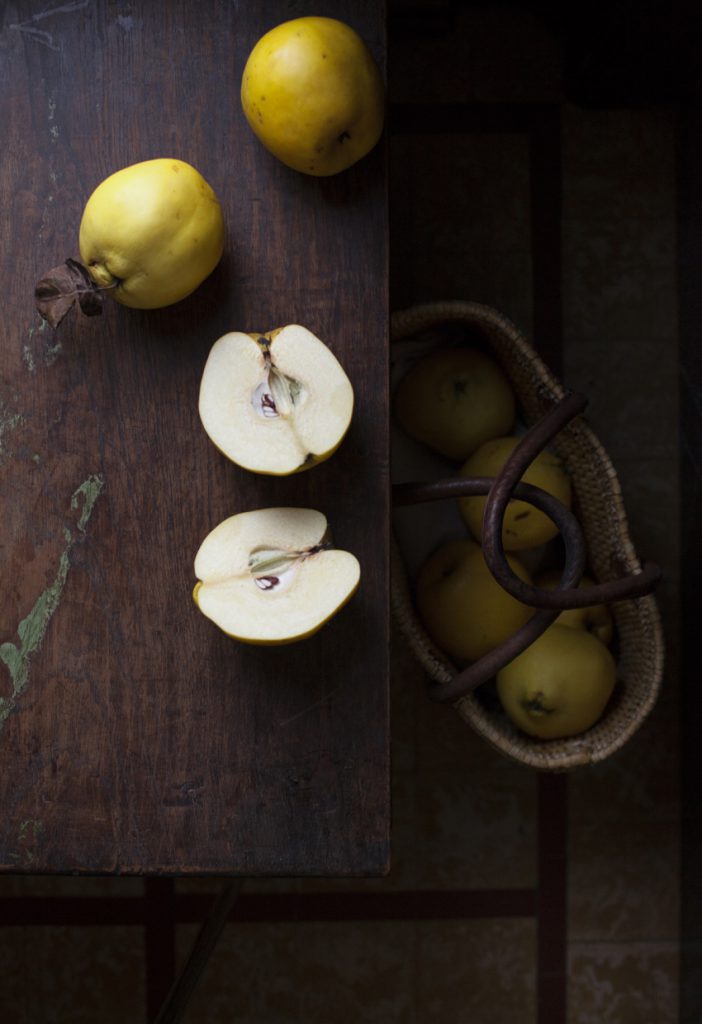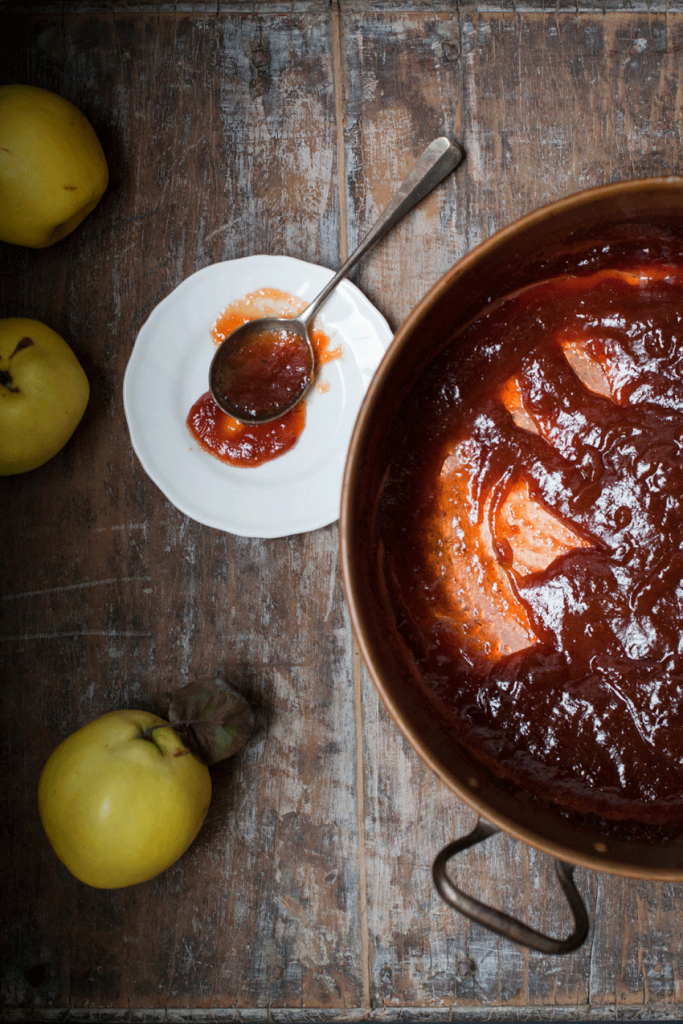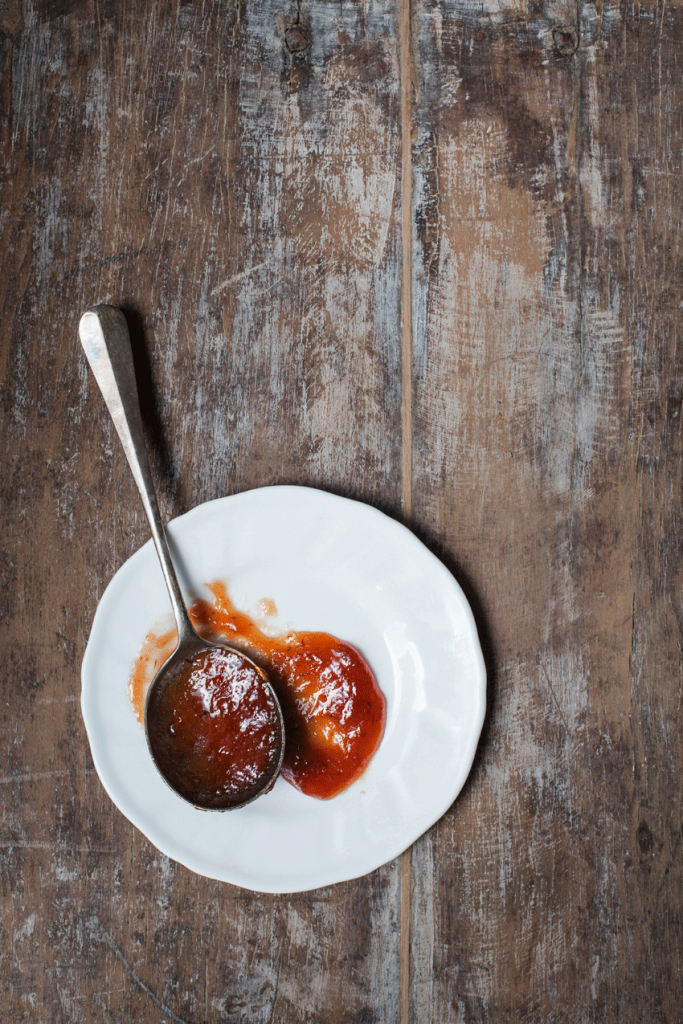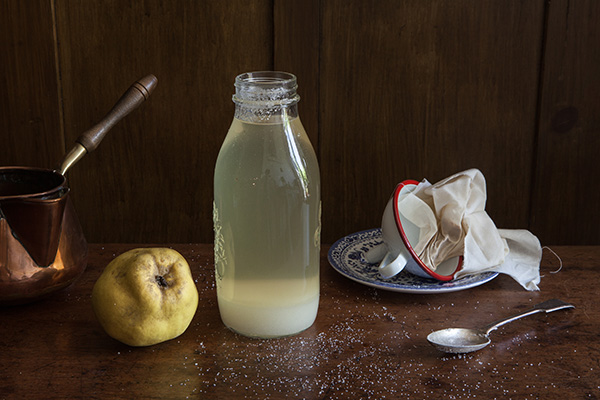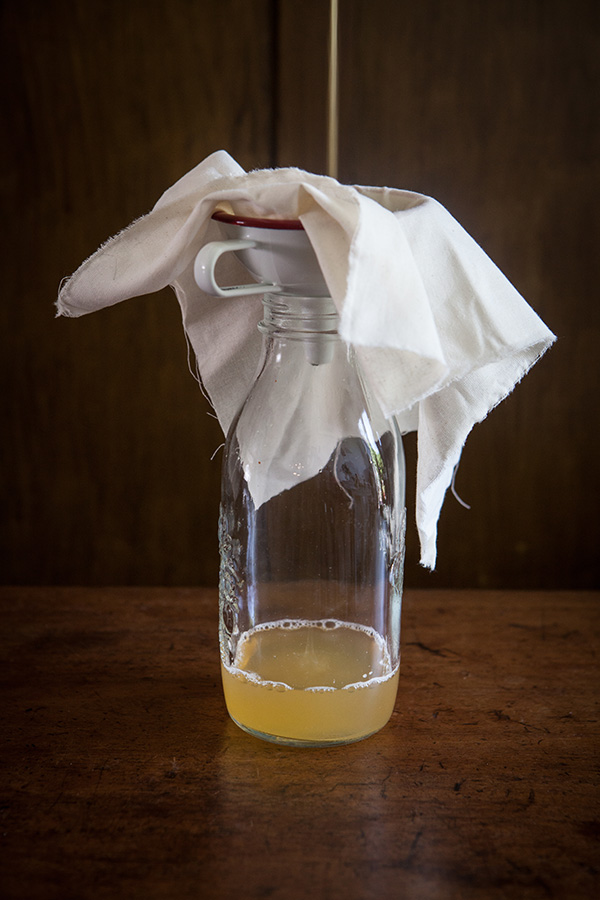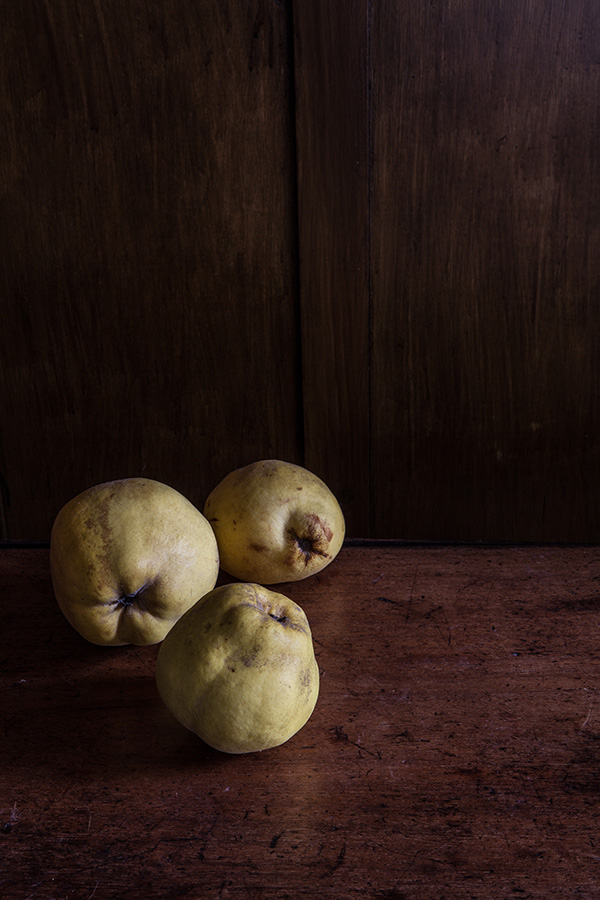The post Quince tart and our workshop in Dorset appeared first on Miss Foodwise.
]]>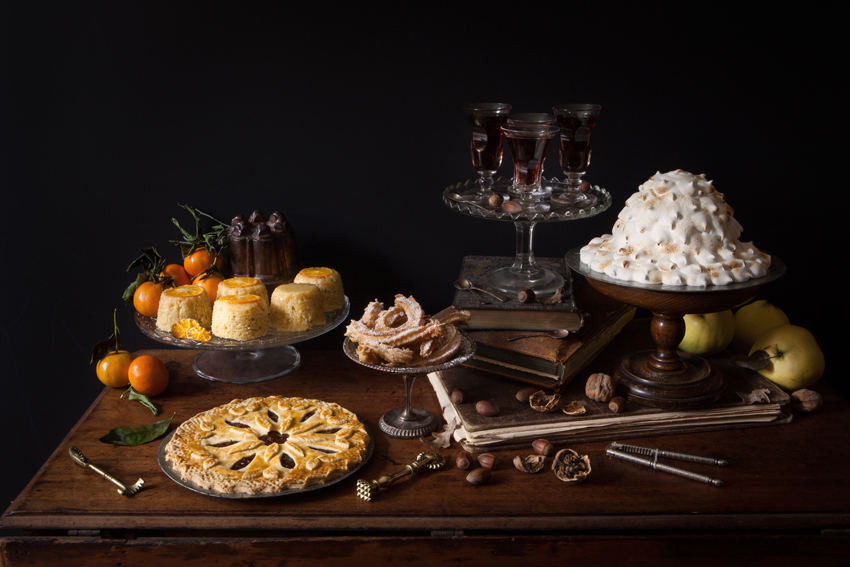
A still life of puddings I created for Borough Market Life Magazine – featuring the quince tart
Two weeks ago on a frosty yet sunny winter morning, we welcomed our workshop attendees at All Hallows Cookery School in Dorset. We started with tea and mini mince pies plus pancakes from the AGA for the early birds. It was hard to get started because we were all having so much fun getting to know each other, or catching up. We made the more delicate puddings from my book, a sweetmeat pudding – otherwise known as the Bakewell pudding, Snake fritters and a quince tart with intricate pastry work. Lunch was beef with prunes, lovingly prepared by our host and owner of the school Lisa Osman. I can’t think of a dish more fitting on a day of English cooking. After all, beef and pudding have been the icon of English food for many centuries. There was a time during the Napoleonic war when eating roast beef and plum pudding would have showed your patriotism. Visitors from all over Europe spoke with high regard about the quality of English meat and beef especially.
After our rather festive lunch in Lisa’s beautiful dining room which made me feel as if I was in a Jane Austen novel, she taught us wreath making which sounds far more easy than it actually was. We struggled and have a huge respect for wreath makers now. We all concluded we now understood why a impressive wreath is so pricy. It takes a ton of work, and will leave you with very painful hands. I finished mine at home and now have it on my front door for all to see.
We are planing more workshops at All Hallows Cookery School in the new year, so if you fancy coming to one, or gifting a workshop to a loved one, then do get in touch with Lisa. All Hallows also has a couple of beautiful rooms so you can make a weekend out of it, or if you’re in the area you can just stay at the house as she is available for bed and breakfast when she has availability.
Now on to that quince tart. I had made the quince jam at home as it takes a couple of hours to make and we didn’t have the time to do that on our day in Dorset. As I said in my previous post where I gave the recipe for quince cheese, you can use that recipe and just not let the jam dry in the oven to become paste. You can dry a part for quince cheese, and use the rest for a tart. But what you also can do is make the filling especially, and then you can use less sugar.
Elaborately decorated tarts like this one were all the rage in 17th century England. Oliver Cromwell the puritan and general partypooper would not have been pleased to see this luxurious tart on his table. He wanted people to eat more simple no-frills meals in order to be closer to god. The whole story about these kind of puddings you’ll find in my book of course. But for now here’s the recipe.
Quince tart
While the original historical recipe uses slices of quince and a syrup made out of the cooking liquid, this version using a jammy quince puree is much more to modern tastes. I’m pretty sure however that they made the same tart this way too. Why wouldn’t they!
The trick to get a beautiful dark colour is to cook the quince and the jam slowly and for a long time. The peel I’m told is also adding to the reddish colour so I never peel the fruit. I do’t remove the cores, because there is a lot of pectin in the pips to thicken the jam. But you can of course peel and core, it’s just not worth the hassle!
What do you need
Makes a 20 cm tart – I find using a enamel plate gives a better result than a pie or tart casing.
- 1 quantity shortcrust pastry, recipe in my book, or use high quality all butter pastry from the shop*
*If you are using store bought pastry you need to buy two packs if you want to make a pastry lid as well. - 3 large quinces, 600 g, roughly chopped each
- 1 cinnamon stick
- 2 cloves
- peel of 1 lemon
- 350 g raw sugar
- 1 egg, beaten, for egg washing
Method
Prepare the shortcrust pastry as instructed in my book or use shop bought. If you are using a pastry lid, don’t blind bake the pastry base. Line the pie dish with the pastry, leaving enough pastry on the rim to fasten the lid to.
Preheat the oven to 160C (315F).
In a large saucepan cover the quinces with water and boil until tender with the spices. Remove the quinces from the saucepan and save the spices (you might not even find the cloves and lemon peel as they can have disintegrated. Just remove the cinnamon.
Blend to a puree using a stick blender. Proceed as for making jam adding the sugar, put the cinnamon back in, being careful as quince jam tends to spit. A way around this is to not make the jam on a hob but first bring it to a boil and stir for 5 minutes, remove the spices, then transfer the pan covered in greasproof paper into the oven at 160°C. Leave there for 45 minutes, then check on it, it should be thick and perfect for a pie filling.
**If you see any woody bits in your puree, I would advise to strain it through a sieve. If you aren’t picky about a few bits, just leave it in.
If using a pastry lid, cut a circle of pastry the same size as the pie dish and carefully place it over the filling. Crimp the edges, or create a nice pattern using a pastry jigger if you have one. Decorate as you please.
Egg wash the pastry lid well and bake in the middle of the oven for 45-50 minutes.
Enjoy as a pudding, or an afternoon treat!
Check out other quince recipes on this website:
Quince Rataffia (quince liqueur) >
And check out Jul’s Kitchen roast quince with rice pudding here >
Special thanks to Rebecca Williams from the blog ‘Hold the Anchovies Please’, who attended the workshop and kindly allowed me to use a couple of shots of the workshop! See her post here >
The post Quince tart and our workshop in Dorset appeared first on Miss Foodwise.
]]>The post How to make Quince Cheese appeared first on Miss Foodwise.
]]>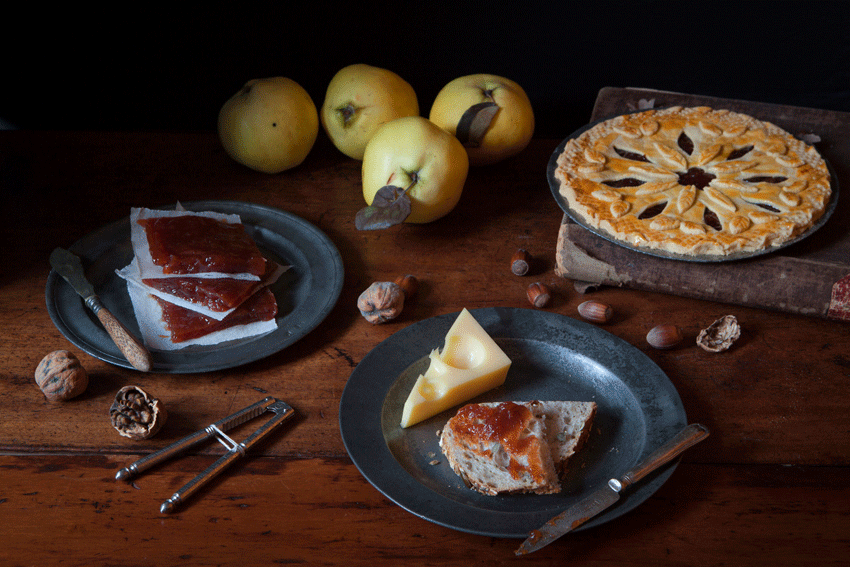 I’m not the biggest fan of sweet desserts after mains, I prefer an afternoon tea where the treats become the star of the show. That way you can enjoy them to the full and they do not become that thing you eat last when you’re actually too full to enjoy it. For an afternoon tea you can dress up, wear a hat, and pretend to be a lady of good breeding. Drinking tea with your pinky in the air, back straight, having polite conversations and enjoying the experience of eating from fine bone china. I’m also a sucker for a multi-tiered cake stand, and for clotted cream – lots of it.
I’m not the biggest fan of sweet desserts after mains, I prefer an afternoon tea where the treats become the star of the show. That way you can enjoy them to the full and they do not become that thing you eat last when you’re actually too full to enjoy it. For an afternoon tea you can dress up, wear a hat, and pretend to be a lady of good breeding. Drinking tea with your pinky in the air, back straight, having polite conversations and enjoying the experience of eating from fine bone china. I’m also a sucker for a multi-tiered cake stand, and for clotted cream – lots of it.Cheese and biscuits are my choice of afters and with a decent fruit cheese and port this quickly becomes my perfect kind of dessert.
Fruit cheeses are reduced jams or pastes. Centuries ago they were served after dinner as a digestive and they were often prescribed by apothecaries to cure minor ailments. The fruit paste was often pressed in a mould with fancy engravings and could look rather stunning. Moulds of this sort are rare to come by, I only know one person who has a mould and I believe he even carved it himself.
Although fruit cheeses should be thick and hold their shape, they should still be spreadable. You can make them into small cake trays for a nice shape or just in a large tray, you can then cut squares of the fruit cheese to wrap them and keep them. They are the most delectable accompaniment to blue cheese, but they can also be eaten all on their own, as a sweetie. A nice idea if you want to know what your child puts in its mouth, factory made sweets can contain all sorts of horrible additives. But it’s still sugar, make no mistake, to call it healthy would be wrong, but eaten and treated as a treat it is just fine.
My favourite fruit cheese is made of Quince. Quince are usually cooked and conserved. They look like otherworldly lanterns, large yellow pears with a strange downy covering. Raw they are considered quite unpalatable because of their tartness, but they are high in pectin which makes them ideal for making jams, jellies and fruit cheese. The pectin is most strong in the pips of the fruit, often ground up pips would be used to set other jelly like creations. But this is something I would not recommend you do as the seeds contain nitriles which turns poisonous when it comes in contact with your guts enzymes and acid. A few pips from your batch of quince are fine, just don’t chuck in a jar of ground up pips.
Quince and quince cheese was popular all over Europe since Medieval times. In Spain they call it ‘Membrillo’, in Italy ‘cotognata’ from the Italian word for quince ‘mele cotogne’ quince apple, the French call it ‘cotignac’ or ‘paté de coing’ from the French ‘coing’ for quince. Quinces are responsible for the word marmalade as their Portuguese word is ‘marmelo’ and they were made into fruit cheeses named marmalades.
Not only quince are used, every type of plum works great too. The Spanish love it with Manchego cheese, others prefer it with sweet cheese curds, but I prefer a good blue cheese like Stilton – the king of blue cheese, Shropshire Blue or Devon Blue.
Recipes for fruit cheeses are plentiful in historical cookery books. It was common to add red sandalwood or cochineal (a red colouring made from the cochineal beatle) to food to enhance the colour. Cochineal, also known as Carmine, was particularly popular in the Georgian and Victorian era but also in Tudor times the colouring of food was a very common practice in the kitchens of the King.
Cochineal wasn’t only used to colour food, it was also used as a textile dye and more recent to give make-up like red lipstick its beautiful red and pink colour. (Since I’ve been wearing red lipstick for half my life I’ve probably eaten quite a few of these little cochineal bugs). I have a small batch of the dried beetles sitting in a jar in my kitchen now, ready for making cochineal. I own a small Victorian Cochineal bottle and it is quite amazing to see the dye has not lost colour all these years. That must be the reason cochineal is considered the best red dye. In Italy the cochineal bugs are used to dye Alchermes, a liqueur popular in Tuscany and other regions. That liqueur is then used to dye food too, cake or lady fingers are often soaked in it. The Italian version of a Trifle, the ‘Zuppa Inglese’ is made with sponge cakes or lady fingers soaked in Alchermes.
See below a period recipe from Mr. Borella, who was the head confectioner to the Spanish Ambassador in England around 1772. He also uses Cochineal to colour his quince cheese.
To make the paste of a fine red, bake the quinces in the oven a long while, then peel and sift them in a strong hair-sieve; dry the marmalade over a slow fire a little while, to about half the consistency of a paste then to redden it the more, keep it a good while on a slow ashes-fire, stirring some time; and to add to this redness, put a little steeped cochineal, and reduce it on a flow fire, to a thick paste; that is, when it loosens from the Pan; put as much sugar as marmalade, or paste, soak it a little while on the fire and let it cool, just enough to work it well with the hands, and finish directly as usual.
Mr. Borella, The Court and Country Confectioner, 1770
The recipe below can be used two ways. You either jar the jam before it goes into the oven to dry and use it as a filling for pies (see the next posting), or you place it into the oven so it becomes fruit cheese.
The trick to get a beautiful dark colour is to cook the quince and the jam slowly and for a long time. The peel I’m told is also adding to the reddish colour so I never peel the fruit.
Quince cheese
What do you need
- 3 large quinces, 600 g, roughly chopped (you can remove the core but I do not for the extra pectin the pips contain, just take off the black crowns)
- 1 cinnamon stick
- 2 cloves
- peel of 1 lemon
- raw cane sugar, equal amount to the pulp
Method
In a large saucepan cover the quinces with water and boil until tender with the spices. Remove the quinces from the saucepan and save the spices.
Blend to a puree with cores and all to get a good set using a stick blender. Measure the quince puree and add the same weight in sugar plus the spices you saved. Proceed as for making jam, being careful as quince jam tends to spit. A way around this is to not make the jam on a hob but first bring it to a boil and stir for 5 minutes, remove the spices, then transfer the pan covered in greaseproof paper into the oven at 160°C. Leave there for 45 minutes, then check on it, it should be thick and perfect for a pie filling.
Let the puree cool so it is cold enough to handle and strain through a sieve, pushing it through with a rubber spatula. Use for pies or jam or proceed to dry the make the fruit cheese by preheating your oven to 130°C if you haven’t already.
Transfer the jam to a shallow tray which you previously lined with greaseproof paper. You can make it as thick if you want but 1 cm is definitely the minimum. Let the paste dry until you feel it is becoming firm. There is no saying how long this will take exactly but it will be around an hour at least for sure.
When ready, leave to cool and then wrap in clean greaseproof paper. Place in an airtight container and it will keep for a few months. It might cristalise a little, but that doesn’t make it bad to eat.
You want it super red?
You might have a hard time finding the cochineal beetles but you can use all natural red beetroot powder!
This is nice as an edible gift to someone special!
You might also like
Damson cheese >
Quince Rataffia >
Quince tart Coming next week!
And check out Jul’s Kitchen roast quince with rice pudding here >
The post How to make Quince Cheese appeared first on Miss Foodwise.
]]>The post Quince Ratafia appeared first on Miss Foodwise.
]]>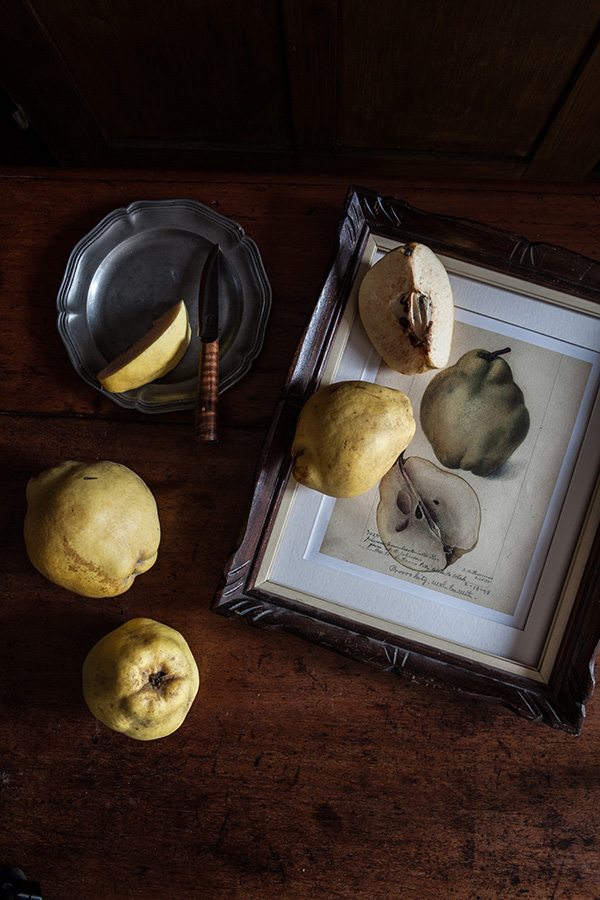 Quince really are a mystical fruit. They hang like lanterns from the trees, forcing the branches to bend down with their weight. One can not ignore their smell, how they fill your kitchen with that sweet incense-like scent. The smell far sweeter than they really are, because as far as fruits go, they are very tart. So tart that they are considered inedible raw.
Quince really are a mystical fruit. They hang like lanterns from the trees, forcing the branches to bend down with their weight. One can not ignore their smell, how they fill your kitchen with that sweet incense-like scent. The smell far sweeter than they really are, because as far as fruits go, they are very tart. So tart that they are considered inedible raw.
Recipes over time always require you to cook quinces, and cook them long and slow. Some authors claim you should never put spices with quinces but most instruct you to add cinnamon, cloves, peper and more sweet spices.
Quinces are responsible for the word marmalade as their Portuguese word is ‘marmelo’ and they were made into fruit cheeses named marmalades. The marmalades were served after dinner as a digestive and they were often prescribed by apothecaries to cure minor ailments.
The pear shaped yellow fruits were made into pies, preserved whole and in form of a syrup and they were also made into Ratafia. Ratafias were infused alcohols much like the Amaretto we know today. It could be made with apricot kernels, bitter almonds – which produce the original Amaretto, cherry kernels and cherries, and our beautiful quinces.
Ratafia of quinces was popular in the 18th century in England, and in the 17th and 18th in France. The following recipe is that of Vincent La Chapelle, the master cook to the fourth earl of Chesterfield, William IV, the Prince of Orange, John V of Portugal and even the mistress of Louis XV of France: Madamme de Pompadour.
Like with so many historical writers, he borrowed a lot of his recipes of another author, in this case the French Francois Massialot who published a book on court cookery and confectionery in 1692. These two gentlemen both share recipes for Quince Ratafia, but La Chapelle instructs us to bring the quince juice to a boil, while Massialot does not. They also use different spices, making the end result not the same drink at all.
You must have some Quinces, and rasp them with a Grater; all being grated, you must have a Piece of strong Cloth, put in a small handful, and squeese it with all your Might, that the Juice may come from it; when all is squeesed and you have all the Juice, put it in a Preserving pan, let it take just one single Boiling, and let it cool; being cooled, measure two Quarts of Juice and two Quarts of Brandy, Measure by Measure, and clarify some Sugar; to each two Quarts, ten Ounces of Sugar, a Piece of Cinnamon, four Cloves, and three or four Grains of white Pepper whole; stop up your Jug very close, put it aside for two or three Months, put it through a Straining-bag, until it come very clear, and put it up in Bottles flopped very close.
Vincent la Chapelle, The Modern Cook, London, 1733
In 1830 ‘The Cook’s Dictionary’ by Richard Dolby instructs us to leave the scrapings of quince for 24 hours until they start to ferment, then extract the juice and add it to spiced brandy. We’re not going to ferment the quince, I will try that next year as I just caught the last of the quinces of the year at the market. And I’m going to leave out the spices because I want to know how it tastes like without them, quince have such a delicate flavour.
What is your favourite quince recipe?
Quince Ratafia
What do you need
250 g quince juice
250 g sugar
700 ml vodka or Eau de vie
a strainer
a cloth or jelly bag
1 liter bottle
Method
As Quinces vary in size and juiciness, I can only give you the amount of juice needed.
In my case I used three large quinces, of which two had little juice so it does really depend.
The original recipe states to grate the quince and then put the grated flesh into a cloth which you have to squeeze to get all the juice out. I am not convinced this works very well and if it does it will be labour intensive. Do if you have a juicer, use that, if you have a blender, use that and strain very well.
Do remove the cores and pips but leave the skin on, just give it a good wash to remove the grey dewy coating quinces often have.
After you have juiced your quince, pour the juice in a saucepan and bring to a boil on a gentle flame.
Once it has boiled, take off the fire and leave to cool.
When cooled, line a strainer with a cloth or jelly bag and place on the bottle you are using.
Pour the juice in the cloth and continue to do so until all the juice is strained.
You need to do this as there might still be some sediment in your juice that you need to remove.
Now add the sugar, and then the alcohol, close the bottle and shake.
Shake the bottle every day the first week and once a week the following month.
Then leave to rest a couple of months and enjoy cold in a dainty glass.
You might also like
Ypocras – mulled wine
Sloe Gin
Hop brandy
The post Quince Ratafia appeared first on Miss Foodwise.
]]>